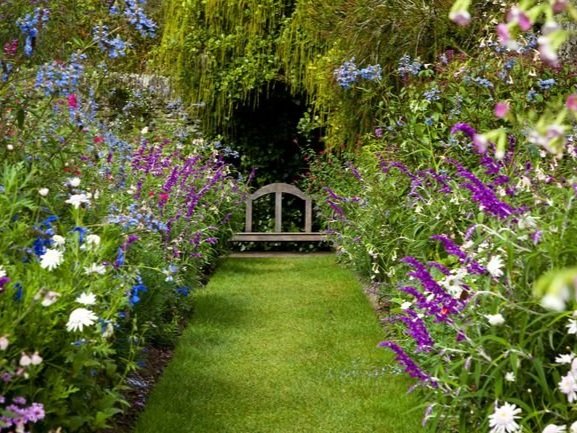Arts & Crafts Planting Style
In the late 1800s the Arts and Crafts movement grew in popularity as a reaction to the industrial climate of the time. The Arts and Crafts movement leaned towards artisan and cottage industries, with a specific focus on the use of local materials.
Garden rooms and vistas are used often in this style of garden design. Yew hedges and walls are used to enclose the garden rooms. Another element that is quite common was a kitchen garden or potager, to make a productive area of the garden.
The aim of an Arts and Crafts garden is to link and create a unity between the house and garden. Climbing roses and other vines on the outside of the house give the feel that the house is part of the garden and not just attached to it. Traditionally, the planting tended to be more formal around the house, blowsy herbaceous borders and climbers were held in check by strict geometric lines, defined be paved terraces, paths, walls and clipped hedges. As you head further out towards the edges of the garden, the design gets looser and more naturalistic. Woodland gardens planted with trees, shrubs and bulbs are common at the far reaches of the garden.
Plants we might use in an Arts and Crafts garden.
Planting Design
GardenWild is Passionate about plants and planting design! If you are interested in finding out more about the different packages we offer then dig a little deeper!












